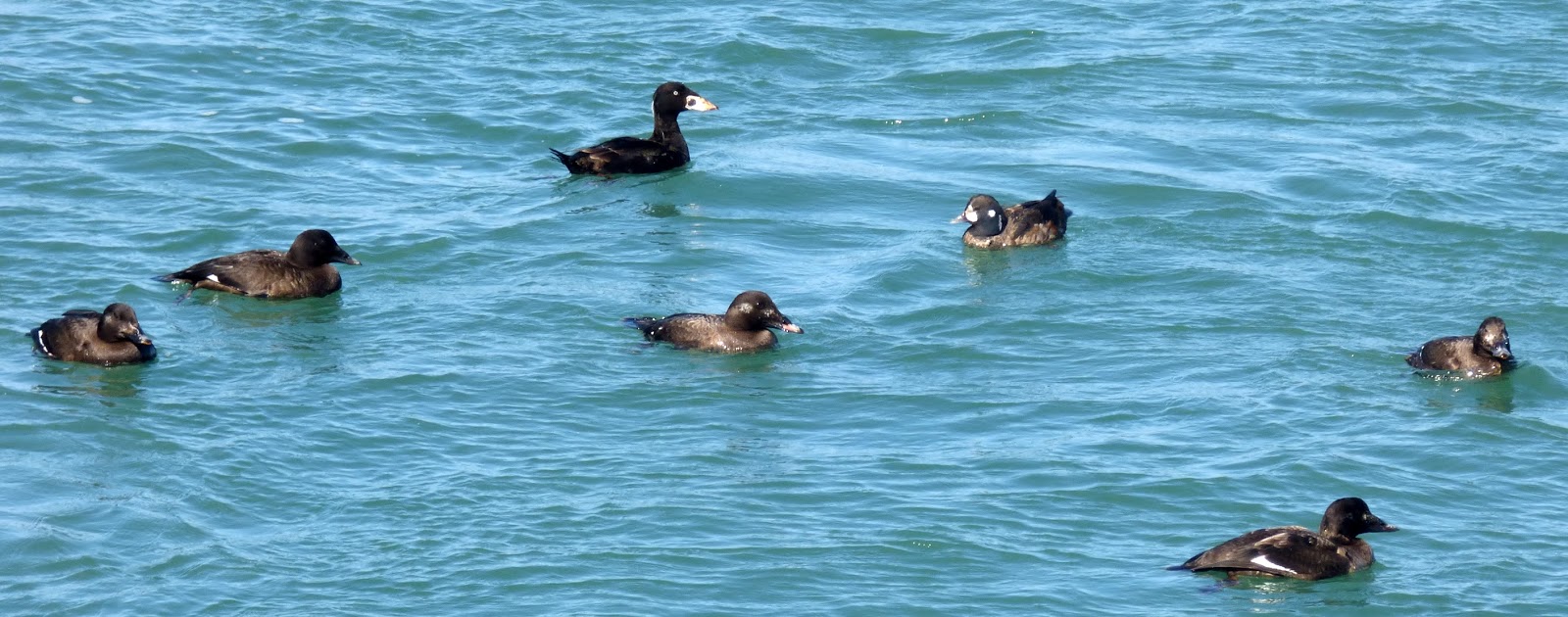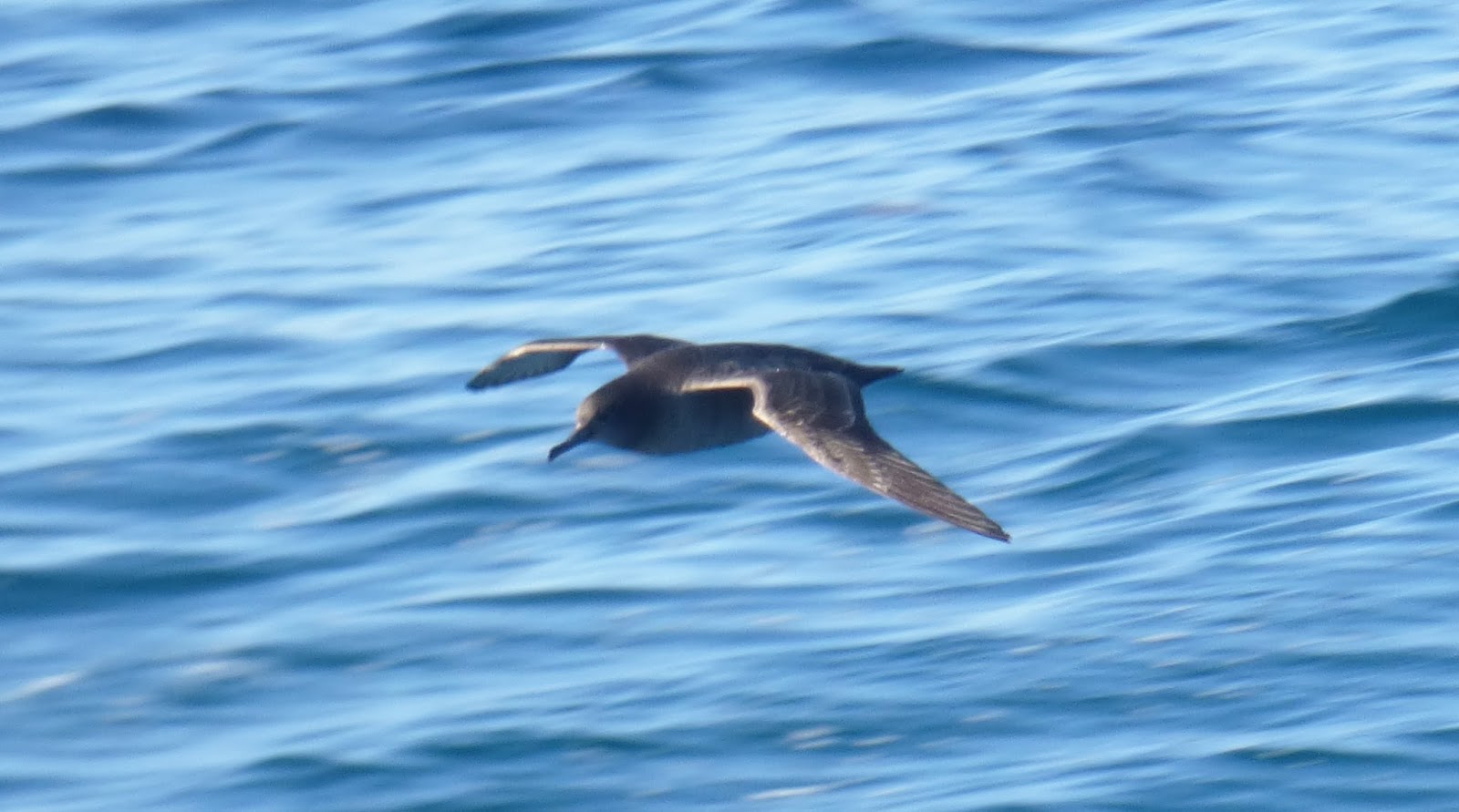Last weekend I led a group of Nicholas School of the Environment graduate students on a grand birding tour of North Carolina's Outer Banks.
We hit up all best hotspots--Bodie Island Lighthouse, Oregon Inlet, Pea Island, Cape Point--and spent Sunday offshore with Brian Patteson looking for pelagics. All told we racked up a whopping 58 non-passerine species.
The frigid winter has made for an excellent year for ducks in North Carolina and on Saturday we managed to stumble upon 17 duck species.
Highlights included this confiding Redhead near the Hatteras lighthouse...
 |
| Redhead, Cape Hatteras |
... and beautiful views of dabblers by the Bodie island lighthouse, such as some gorgeous drake Northern Pintail...
 |
| Northern Pintail, Bodie Island lighthouse pond |
...but it was the assortment of sea ducks at Oregon Inlet that stole the show.
 |
| Harlequin Duck, Oregon Inlet |
 |
| Surf Scoter, Oregon Inlet |
 |
| Harlequin Duck, Surf Scoter and five White-winged Scoters, Oregon Inlet |
We birded the banks Saturday because wind kept us from going offshore, but our trip aboard the Stormy Petrel II on Sunday, with calm winds and unseasonably warm air, was the most pleasant winter pelagic I've ever been on.
 |
| Nicholas School students checking out life on the edge of the gulf stream |
Slack winds made the ocean glassy and it was unusually easy to spot alcids on the water.
 |
| Razorbill, pelagic off Hatteras |
 |
| Dovekie, pelagic off Hatteras |
We followed a sharp color change for several miles, which was teaming with birds and other sea life. I had never seen so many huge flocks of Bonaparte's Gulls and Red Phalaropes.
Manx Shearwaters are expected in winter and we saw several.
 |
| Manx Shearwater, pelagic off Hatteras |
But a Sooty Shearwater was a rare treat!
 |
| Sooty Shearwater, pelagic off Hatteras |
It flew in and fought with the gull flock for chum scraps for half an hour!
For many of the students the bird life on this trip was outshone by other sea creatures, such as loggerhead sea turtles, a basking shark, bottlenose dolphins and a whopping 25 (or so) Manta Rays!
 |
| Manta ray with remoras, pelagic off Hatteras |
This was a lifer for me, but I'll admit I was more excited about the life bird I saw this trip. More to come on
this in a later post, but *hint* it was a gull.
A fun time was had by all.
 |
| The group at Hatteras lighthouse |
A big thanks to Brian Patteson and Kate Sutherland for running another awesome pelagic trip, to Jeff Lemons for helping spot birds and to my co-leaders Nicki and Natalia.


























